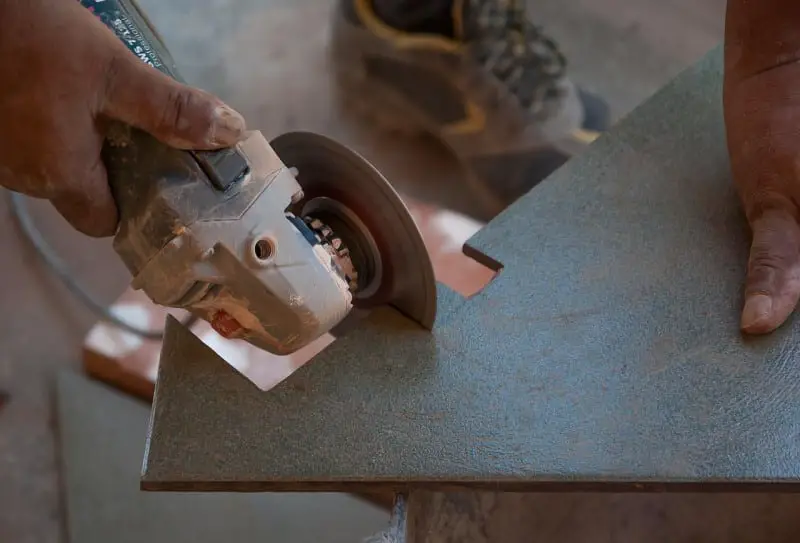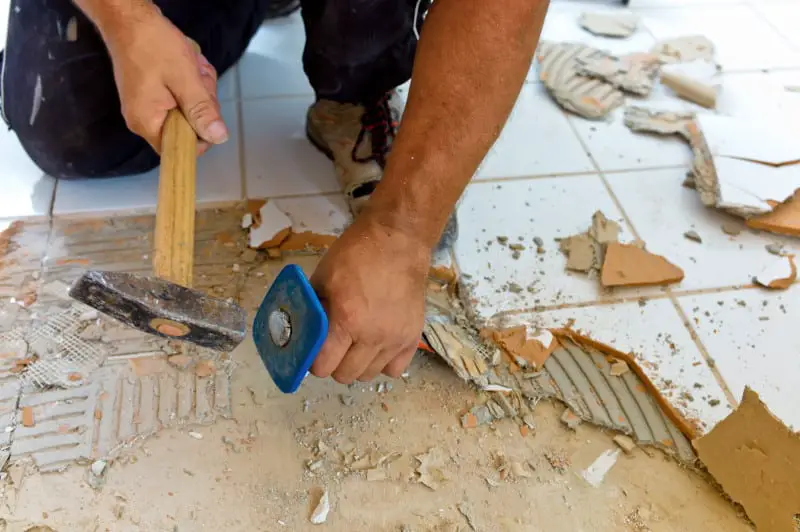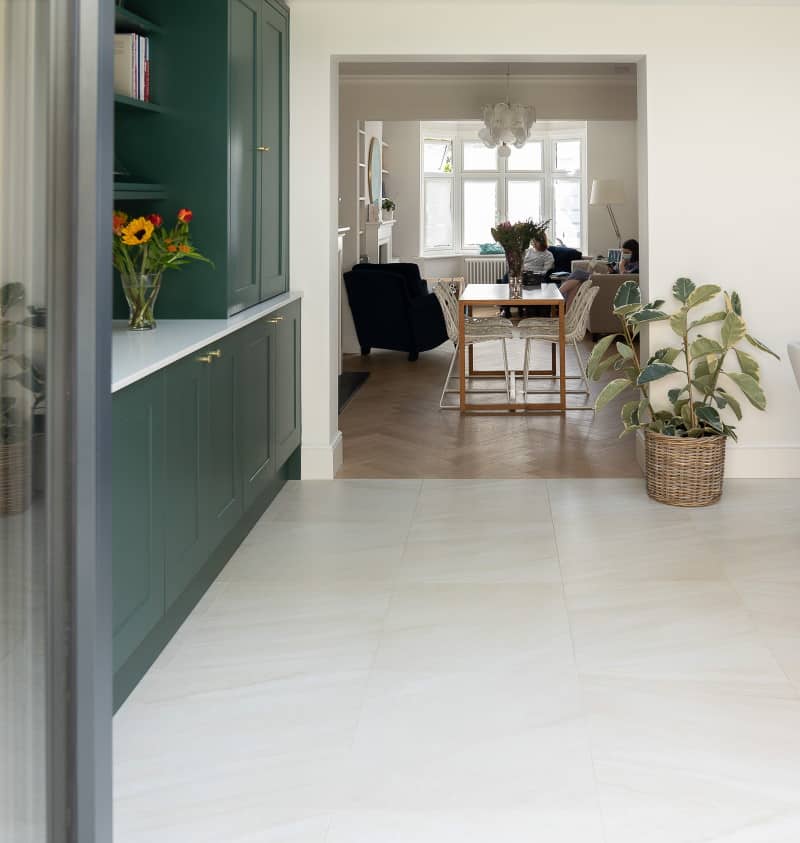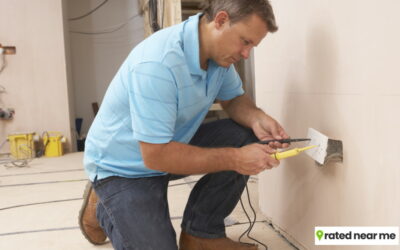Are you thinking about renovating your bathroom, kitchen or hallway? Are you looking for the costs of floor tiling?
No matter what room you have decided to update, if you choose to lay new floor tiles, you will need to factor this into your budget.
In this guide, we discuss what affects the cost of laying floor tiles, along with the cost depending on the room type.
But if you can’t wait to read through this guide, the average cost of tiling a floor in the UK is £35 per square metre.
Like everything else, floor tiling costs vary greatly depending on what you want and how you want it!
Why floor tiles?
There are many different types of tiles and different reasons for choosing tiles instead of a carpet or wooden floor. The most common reason is for the “look”.
Floor tiles are not just an aesthetic way to improve the look of a room, they can also be functional. They provide a waterproof / water resistant finish in areas such as bathrooms and kitchens. Tiles are also easier to clean in these types of rooms as well.
When people think of floor tiles, ceramic or porcelain tiles first come to mind. But there is a new type “luxury vinyl tile” (LVT) which is becoming more popular.
LVT tiles allow you to get expensive looking tiled floor at a lower price. And into the mix marble tiles, which tend to be at the higher price range, and this opens up the range of floor tiles, and price ranges too.
If you want to stretch to a higher end job, expect to pay anywhere around £50 per sq metre.
So what factors affect the cost of floor tiling the most?
Factors Affecting Floor Tiling Cost
You might think that it is obvious that you have to pay higher costs for higher quality. However, it doesn’t always work that way with floor tiling, there are other cost factors which come into play:
1. Room Size & Shape
The bigger a room, the more surface area it has. It is only natural that it would cost more to tile a bigger room. Most homeowners appreciate this has a baring on the cost of buying the tiles (and how much adhesive is required).
However, the room size also dictates the labour costs involved. A bigger room will take longer to tile and may involve more than one tiler on the tiling project.
Likewise, the shape of the room can have an affect on the floor tiling cost.
A rectangular room technically should be the easiest to tile. But, if your room has curved walls or lots of angles (i.e. L-shaped walls), then the tiler will have to spend more time cutting tiles to fit around these walls.

So, before you get your tape measure out to calculate how many floor tiles you will need – keep in mind that the shape (and size) of the room will have a direct impact on the cost of the tiles, additional materials (more on this later) and the labour costs.
2. Type Of Tile
As we mentioned at the beginning of this guide, the cost of tiling a floor also depends on the tile material.
Depending on your taste and style, you can choose from many different types of tiles.
Different tiles can serve different purposes. . If you wish to go for a more royal, sophisticated appearance, you may have to spend more money on premium marble tiles. Granite and limestone also offer that premium feel, but they are expensive too.
If you want a more cosmopolitan look, ceramic and porcelain floor tiles will be the choice for you. And if you live in an older style property, stone or clay tiles can offer that rustic look to compliment the rest of the building.
And there is the option of LVT tiles. Luxury vinyl tiles are a cheaper option, but still look good.
Ceramic tiles tend to be the more common “cost-effective” option for floors and wall tiles. They look great and last for years without breaking a bank.
When it comes to the type of floor tile, as the price of the material goes up, you typically get better quality product.
It is always best to think of the room that your are tiling and which tile material will work best. Then factor in the price of the tile material.
3. Floor Preparation
Unfortunately, you cannot just stick tiles on the floor without preparing the existing flooring surface first.
Depending on what the underlying floor is made of (wood, concrete etc), a professional tile fitter will always prepare the floor before they lay tiles tiles onto it.
Different types of floors have their own challenges.
For example, concrete floors tend to be uneven. In that event, a tiler will first polish the floor to make it more level. They may pour a self-levelling compound over it to even it out. If it is a new concrete floor, then it will need sealed so that the tiling adhesive has something to bond with.
Wooden floors (or suspended joist floors) on the other hand, tend to move as weight is applied to it. It happens as a result of the wooden boards flexing around the joints or on areas not supported by a joist underneath.
Professional tilers typically fix another layer of wood (plywood) on top of wooden floors to prevent it from moving, before laying the tiles onto this top layer.
If you already have existing tiles, these normally need removed to create a clean canvas for the new floor tiles. This can be a dangerous task if you do not have the proper equipment, as tiles can have sharp edges.

This all adds to the cost of floor tiling and you will have to pay the tiler depending on how much preparation the floor needs.
If the floor is in good condition to apply tiles, you may not have to pay anything extra. If it is not, then you may have to pay around £12 per m² for the preparation work.
It is always wise to get multiple quotes for floor tiling. Compare the quotes to see what each tiler has included. If one is cheaper but has not included costs for floor preparation, and the other two quotes have – ask yourself why?
There is another option, if you are good at DIY and have experience of floors, you could do quite a bit of the preparation yourself (and save money). Keep in mind, that it might take up a lot of your time and you will need to prepare it to a standard the tiler is happy with.
4. Choice Of Tile Pattern
Tile pattern refers to the way in which the tiles are laid out on the floor. Herringbone, grid, brick bond, and modular are some of the most popular tile patterns used in homes in the UK.
Tile patterns include:
- Herringbone
- Double herringbone
- Grid
- Diamond
- Chevron
- Wood strip
- Brick or running bond
- Stack bond
- Double basket weave
- Mosaic
- Basket weave
If you choose a simple pattern, like stack bond, then you can expect to pay a lower tiling cost. Whereas, if you choose something more complex like herringbone, then the tiler will take more time to lay this pattern, and so your labour costs will be higher.
Tile pattern is often purely an aesthetic preference for the homeowner. Those on tighter budgets should stick with simple designs. If money is no object and you want to pick a more extravagant design, then herringbone or double basket weave are options.
5. Location
When we talk about location, we don’t mean what room in your house.
Where your house is located in the UK is also a key factor in the cost of floor tiling. If you live in London or the south of England generally, expect to pay a higher price for professional tilers.
This is pure and simply due to the cost of living in these areas. Those who live there know everything is more expensive, and floor tiling is no exception.
With congestion charges, low emission zones and all sorts of other local authority restrictions, it is making it more difficult (and expensive) for tradespeople to get into some cities.
In other parts of the UK, the price of tiling can often be driven by how many tilers your town or city has and how competitive they are.
Competition from local tilers can often pull the prices down since homeowners have more choice. That is one of the reasons why it is important to get multiple quotes from local tilers. You might find a big difference between their quotes.
So, your homes location does have a big impact on the price of tiling. Unfortunately, it is not something that you can control.
6. Other Tiling Materials
Floor tiling projects do not only involve the cost of the actual tiles and the tilers time. Underfloor heating (and electrics), floor tile adhesive, grouting, tile sealing, preparing the floor etc. are all part of floor tiling job.
Do not forget these items when you are calculating the cost of your floor tiling project.
As an average, a bag of grout costs £17, high quality tile sealant costs around £20. If you are looking to install electric underfloor heating, costs can rage from £60 to £100 per sq metre.
While underfloor heating is an option, items such as tile adhesive, grout and sealant are not.
As mentioned previously, the floor preparation may include buying and fitting extra layers of plywood. The cost of the wood will need to be added to the overall project cost – along with any delivery charges or parking fees incurred by the tiler whilst they are at your home.
After you have received quotes from local tilers, clarify these additional costs with them before signing the contract to avoid any future confusion or unexpected bills.
Types Of Floor Tiles
There are many types of floor tiles – ceramic, porcelain and marble are some of the more common options. But there are some other types, such as natural stone tiles, which are worth considering if they fit the style of room, and of course, your budget.
Ceramic Tiles
Ceramic tiles are the most common used in domestic homes. They are also a relatively cheap option. Ceramic tiles cost around £10 to £40 per square metre.
While ceramic tiles are relatively cheap, they are not very durable. Probably not the best option for high-traffic floors, floors with heavy furniture or where heavy objects may get dropped on them.
Porcelain Tiles
Porcelain tiles typically cost twice as much as ceramic tiles. The aesthetic looks of porcelain tiles makes them a popular choice for domestic use. But they are not ideal for floors that are prone to heavy traffic.
Marble Tiles
Marble tiles offer something special to look at, and their cost is not extortionate. Marble floor tiling will cost you around £40 to £70 per square metre. But be warned, certain types of marble tiles are prone to cracking. And they require lots of care and maintenance.
Granite Tiles
As you go up the scale, hard wearing tile such as granite tiles, not only look great, they do not need any chemical cleaning to keep them looking good. Granite tiles range around £100 per square metre.
Glass Tiles
Glass floor tiles are not a common site in homes around the UK. At a cost of around £160 per square metre, you would need to be very careful where they were laid and and what sort of traffic would be on them – as glass tiles are very fragile.
Glass tiles are more of an aesthetic option – a statement, when compared to the other types of tile.
Tiling Different Rooms
Most homeowners in the UK prefer to tile their bathroom floor and kitchen. Hallways are also popular due to the fact that they are the common walkway between most downstairs rooms where muddy feet might venture.
Tiling these rooms means the floors are easy to wipe and keep clean with a mop and bucket.
When tiling a bathroom floor or kitchen floor, many people prefer to chose a non-slip tile or apply a special non-slip protection for added safety.
This will add to the tiling cost of the project.
And if you decide to tile every floor in your home, you will need deep pockets to achieve this. But you will end up with a very happy tiler.

Cost For Floor Tiling
We have included some ballpark figures for the tiling cost for different room sizes. As you will have noted above, the total cost can be affected by many different factors – so that is why you should always request quotes from highly rated floor tilers near you.
| Tile Material | Small Room 5 sqm | Mid-sized Room 10 sqm | Large Room 20 sqm |
|---|---|---|---|
| Ceramic tile | £75 – £250 | £150 – £500 | £300 – £1,000 |
| Porcelain tile | £300 – £450 | £600 – £900 | £1,200 – £1,800 |
| Marble tile | £150 – £300 | £300 – £600 | £600 – £1,200 |
| Limestone tile | £225 – £425 | £450 – £850 | £900 – £1,700 |
| Glass tile | £450 – £750 | £900 – £1,500 | £1,800 – £3,000 |
| Granite tile | £350 – £500 | £700 – £1,000 | £1,400 – £2,000 |
You will also have to factor in labour and additional materials to the average costs above. Labour costs can be anywhere between £100 to £250 per day depending on your location.
It is also recommended to add between 5% to 10% more to the floor tiling prices to cater for any broken tiles.
Floor Tiling FAQs
Why do floor tiles move?
Floor tiles can move as a result of uneven or flexing floor surfaces. If the floor surface (concrete or wooden) was not prepared correctly, the tiles won’t fit properly and will move after installation.
Is floor tiling difficult?
Floor tiling is quite difficult. If you want the floor tiles to look nice and level, then it is a task best left to professional tilers.
Is it cheaper to install tile or vinyl flooring?
Vinyl flooring typically tends to be cheaper than tiles, but it also depends on what type of tiles you want. When it comes to durability, vinyl floors can work out more cost-effective when compared to cheaper tiling options.
Which is cheaper to install, tile or wood floors?
Laying tile tend to be more involved than laying wooden floors, as tiling requires more prep work and finishing work. But that being said,
wooden floors and tiled floors can be as cheap or expensive as you want.
Can you tile on top of existing floor tiles?
The short answer is yes. You can lay new tiles on existing floor tiles, but you must prime the existing tiles first. If the old tiles are uneven, you may need to level them first with special levelling compound. Then you can lay the new tiles as normal.



